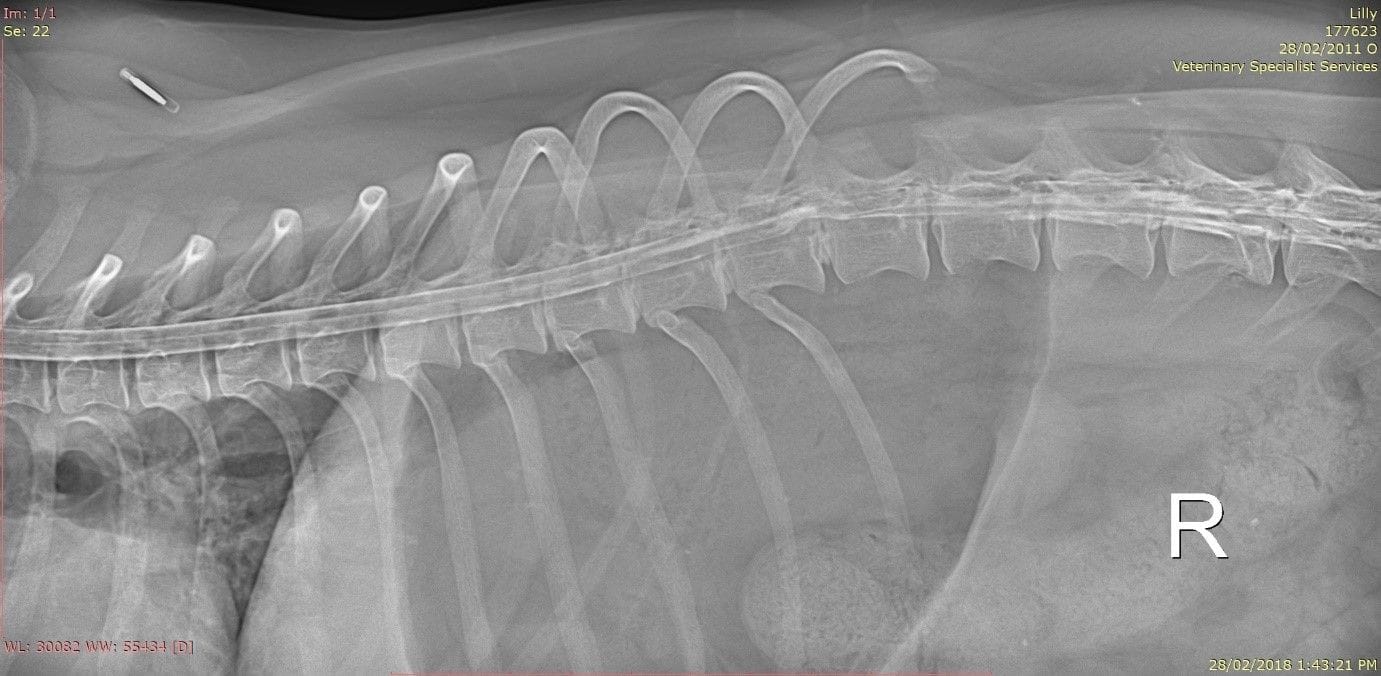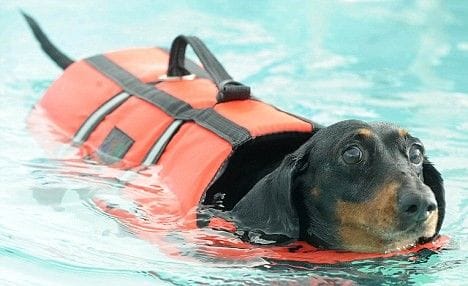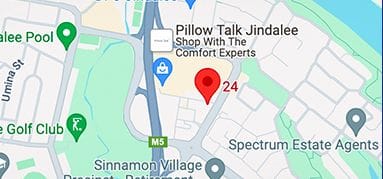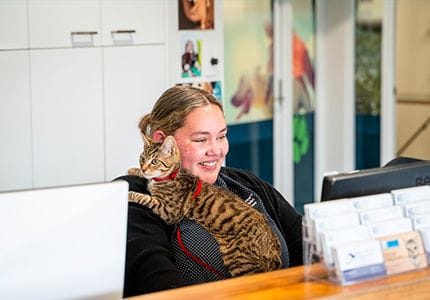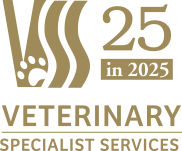Intervertebral disc disease (IVDD) is the most common spinal disease in dogs and is also seen occasionally in cats. Intervertebral discs are fibrocartilage cushions that sit between the vertebrae (except for C1-2). They allow movement, are supportive and act as shock absorbers. Intervertebral disc degeneration results in changes in the disc and can ultimately lead to disc herniation and spinal cord compression.
Causes
Intervertebral disc disease is caused by degenerative changes in the intervertebral disc. In some patients, especially the chondrodystrophic breeds, this degeneration can occur from an early age. Disc degeneration occurs because of changes in the hydration of the disc. Chondrodystrophic dogs have short legs relative to their body such as Dachshund, Beagles, Terriers and many other breeds. Chondrodystrophic dogs frequently have early degenerative changes in their discs making them more likely to cause problems.
Disc degeneration results in diminished shock-absorbing capacity, and can ultimately lead to disc herniation and spinal cord compression.
Clinical signs
Animals affected by intervertebral disc disease may present with spinal pain localised to the back or neck, progressing to weakness or even paralysis. In some animals, acute onset of paralysis is the first clinical sign noted. Nerve fibres flow from the brain to the limbs along the spinal cord, therefore the clinical signs will refer to spinal cord dysfunction below the injury. For example, disc disease in the lower back can cause hind limb weakness, paralysis or urinary incontinence whilst disc disease in the neck can cause weakness or even paralysis of all four limbs.
The initial signs are usually associated with pain. Signs associated with spinal pain include abnormal posture such as a hunched back, shivering, panting, unwillingness to move and difficulty jumping or using stairs. This can progress to difficulty walking, poor control of the limbs, weakness, ataxia (wobbly walking) or complete paralysis. Disc disease can also affect the ability to empty the bladder and in severe cases there can be loss of sensation or feeling in the legs.
Spinal injury is an emergency situation and your pet needs to be assessed by a Specialist Surgeon as soon as possible following the onset of clinical signs. Delay in treatment can worsen the prognosis.
Diagnosis
Intervertebral disc disease may be strongly suspected based on clinical signs especially in predisposed breeds, however diagnostic imaging is essential to confirm the diagnosis. Plain spinal radiographs may reveal characteristic changes of disc disease however plain radiographs rarely provide the accurate conformation and localisation required for surgical management.
Advanced imaging is always required to allow a definitive diagnosis. Myelography, MRI or CT are routinely used at Veterinary Specialist Services for diagnosis and surgical planning. Your surgeon will advise the best diagnostic modality for your pet - this varies between cases. Advanced imaging provides more information than plain radiographs for diagnosis and surgical planning and allows a treatment plan to be developed for your pet. As patients must be perfectly still general anaesthesia is always necessary for imaging. If imaging and advanced diagnostic tests are not performed an accurate diagnosis is not possible.
)
